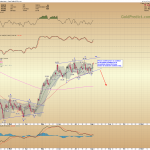A Quick Look at a few Technical Yardsticks and Comparisons
We went through numerous charts and data over the weekend to provide a snapshot of where market currently stands. This is in context with our idea that sudden downturns in the form of mini-crashes are likely to happen with very little advance warning, mainly due to market structure issues (the vast increase in systematic trading strategies) and the unique post “QE” environment.

Bad hair can be dangerous! Shock-haired Pete and his bro Suck-a-thumb have been traditionally used to get children in Germany and eventually across all of Europe to behave by traumatizing them with some of the most frightening horror stories ever thought up. Everybody in Europe knows these characters, and everybody was scared out of his wits by these stories as a child.
An ideal template for an event related to structural issues was created by the mini-crash of August 2015, which we have last shown on 05 October in this context (see: “US Stocks and Bonds Get Clocked in Tandem”). As the chart below shows, the entire affair took just a little more than three trading days to play out. Almost needless to say, it was completely unexpected.

The sudden decline of August 2015 happened after China’s stock market and the yuan had been under pressure for quite some time and foreign exchange outflows from China accelerated. A post-mortem suggested that the fact that treasury bonds and stocks began to decline simultaneously just as the 200 day moving averages of US benchmark indexes were violated precipitated a chain reaction, with CTAs, risk parity strategies and volatility targeting strategies egging each other on in a kind of vicious spiral of stop-loss triggers going off.
Here are a few data points related to the similarly sudden and widely (but not entirely) unexpected sell-off of last week. First, here is a chart of the CBOE equity put-call ratio over the past few years compared to the SPX.














Leave A Comment